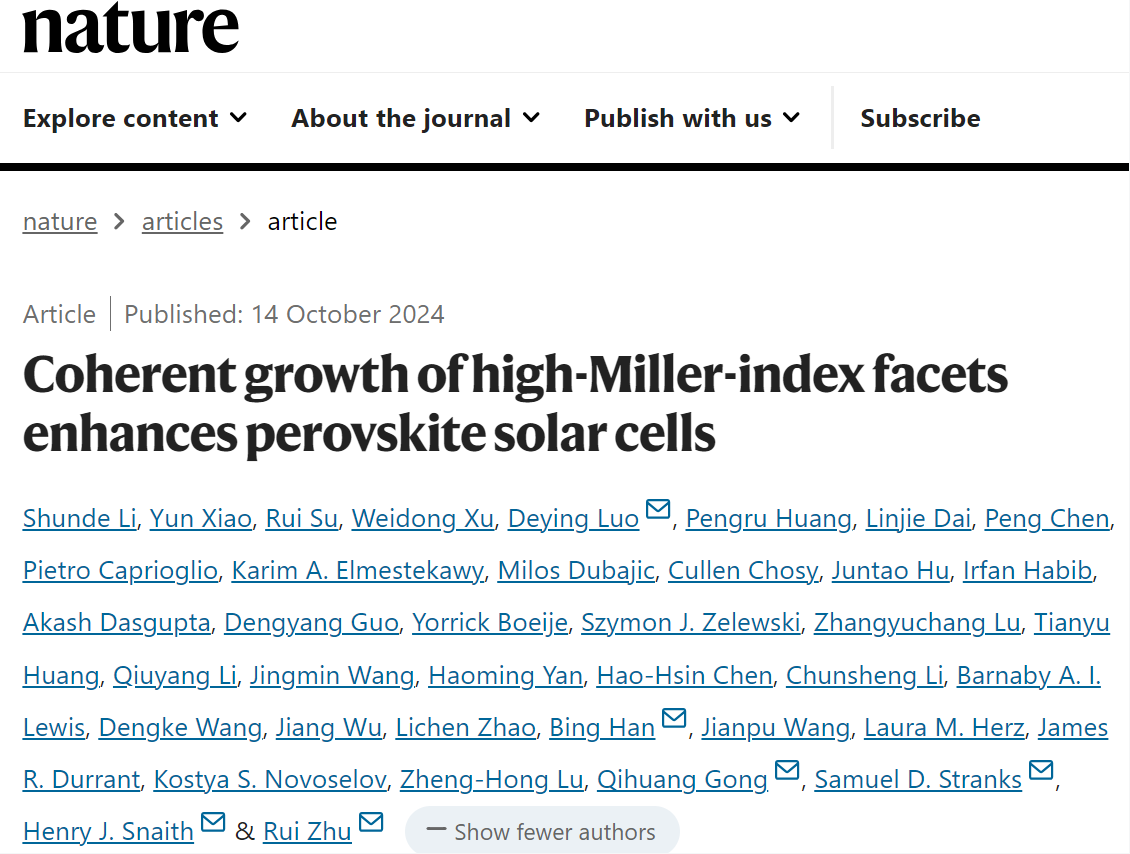On October 14, Nature reported the latest findings in perovskite solar cells by Professor Luo Deying from the International Research Institute for Multidisciplinary Science of Beihang University and his collaborators. The study, titled “Coherent growth of high-Miller-index facets enhances perovskite solar cells,” focuses on the key technical challenge of photon utilization and electrical loss in inverted perovskite solar cells.

Professor Luo Deying of of Beihang University, Assistant Professor Han Bing of Ningbo Eastern Institute of Technology, Professor Samuel D. Stranks of the University of Cambridge, Academician Henry J. Snaith of the University of Oxford, Academician Gong Qihuang of Peking University, and Professor Zhu Rui of Peking University are the corresponding authors. Beihang University is one of the main corresponding affiliations.
The study reports an effective method for producing high-quality, micron-thick formamidinium-based perovskite films by forming coherent grain boundaries, where high-Miller-index-oriented grains grow on the low-Miller-index-oriented grains in a stabilized atmosphere. The resulting micron-thick perovskite films, with enhanced grain boundaries and grains, showed stable material properties and outstanding optoelectronic performances. The small-area solar cells achieved efficiencies of 26.1%. The 1-square-centimeter devices and 5 cm × 5 cm minimodules delivered efficiencies of 24.3% and 21.4%, respectively. The devices processed in a stabilized atmosphere presented a high reproducibility across all four seasons. The encapsulated devices exhibited superior long-term stability under both light and thermal stressors in ambient air.
This work receives great assistance from Dr. Huang Pengru and Professor Kostya S. Novesolov (Nobel laureate) from the Institute for Intelligent Functional Materials, National University of Singapore for theoretical calculations. The main collaborators also include Professor Laura M. Herz from the University of Oxford, Professor James R. Durrant from Imperial College London, Academician Lu Zhenghong from the University of Toronto, and Professor Wang Jianpu from Changzhou University and Nanjing Tech University.
Original article link: https://www.nature.com/articles/s41586-024-08159-5
Written by: Lyu Xingyun

